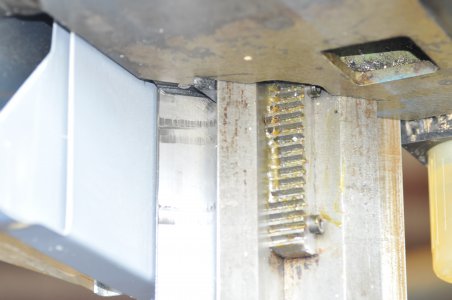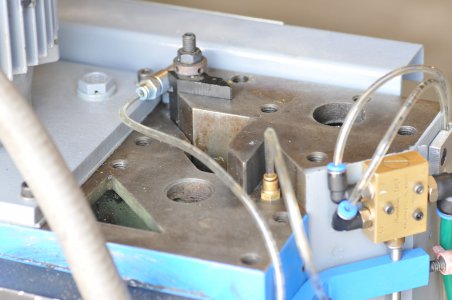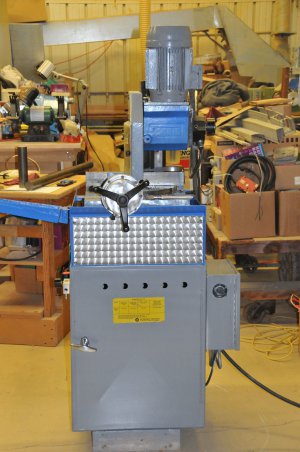I'm in the process of restoring an old Italian made cold saw. I'm at the point where I feel the need to make a new gibb. Someone has made one out of a scrap of plastic. No matter how I try to adjust it it has a lot of drag. I'd like to make a new metal one. All the ones I've seen have been steel of some sort. I have no faith that the plastic one is the proper taper. The gibb is enclosed except for one end. The dovetail column is vertical with the gear box and motor hanging on one side. Heavy! I'm going to try measuring the taper by first removing the plastic one then sliding various thicknesses of aluminum in. Measuring when they wedge and what thickness they are. By measuring several different thicknesses and the depth that they wedge I should be able to find a taper. Is there any sort of standard used?
Making one. I don't have access to a surface grinder. The plan is to screw a piece of steel to a heavy back up. Shim it on the mill table to match the measured, guessed at, taper and just cut the taper with a shell mill. The machining marks will hold oil. By bluing the gibb and trial fitting I might get in the ball park. Hand scrape the high spots. The motor & gear case with the mating dovetail is very heavy and tricky to a align. Any suggestions would be appreciated. Does it matter what kind of steel I make the gibb from? 12L14?? There is a pump on the machine for oiling.
Making one. I don't have access to a surface grinder. The plan is to screw a piece of steel to a heavy back up. Shim it on the mill table to match the measured, guessed at, taper and just cut the taper with a shell mill. The machining marks will hold oil. By bluing the gibb and trial fitting I might get in the ball park. Hand scrape the high spots. The motor & gear case with the mating dovetail is very heavy and tricky to a align. Any suggestions would be appreciated. Does it matter what kind of steel I make the gibb from? 12L14?? There is a pump on the machine for oiling.




